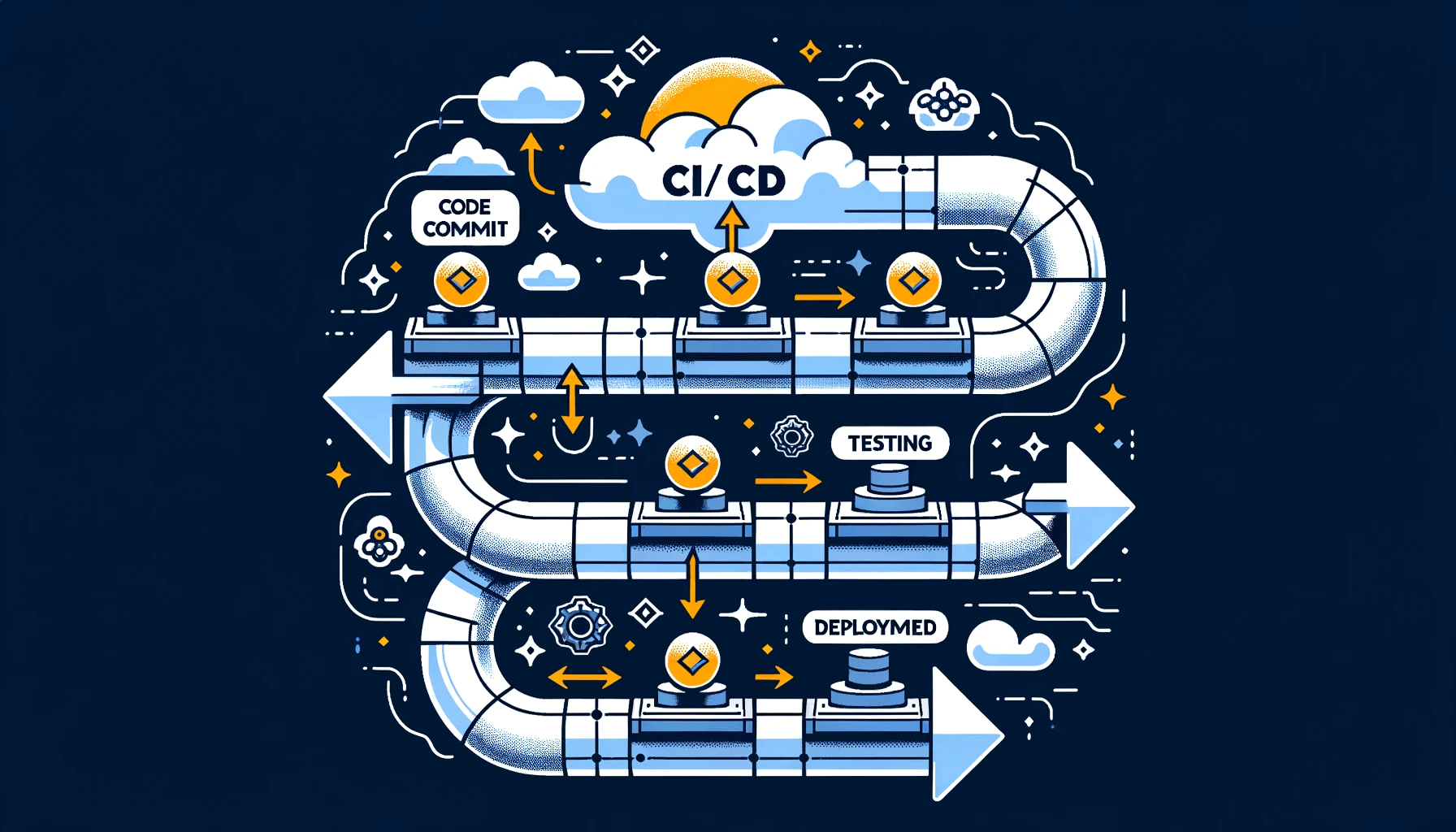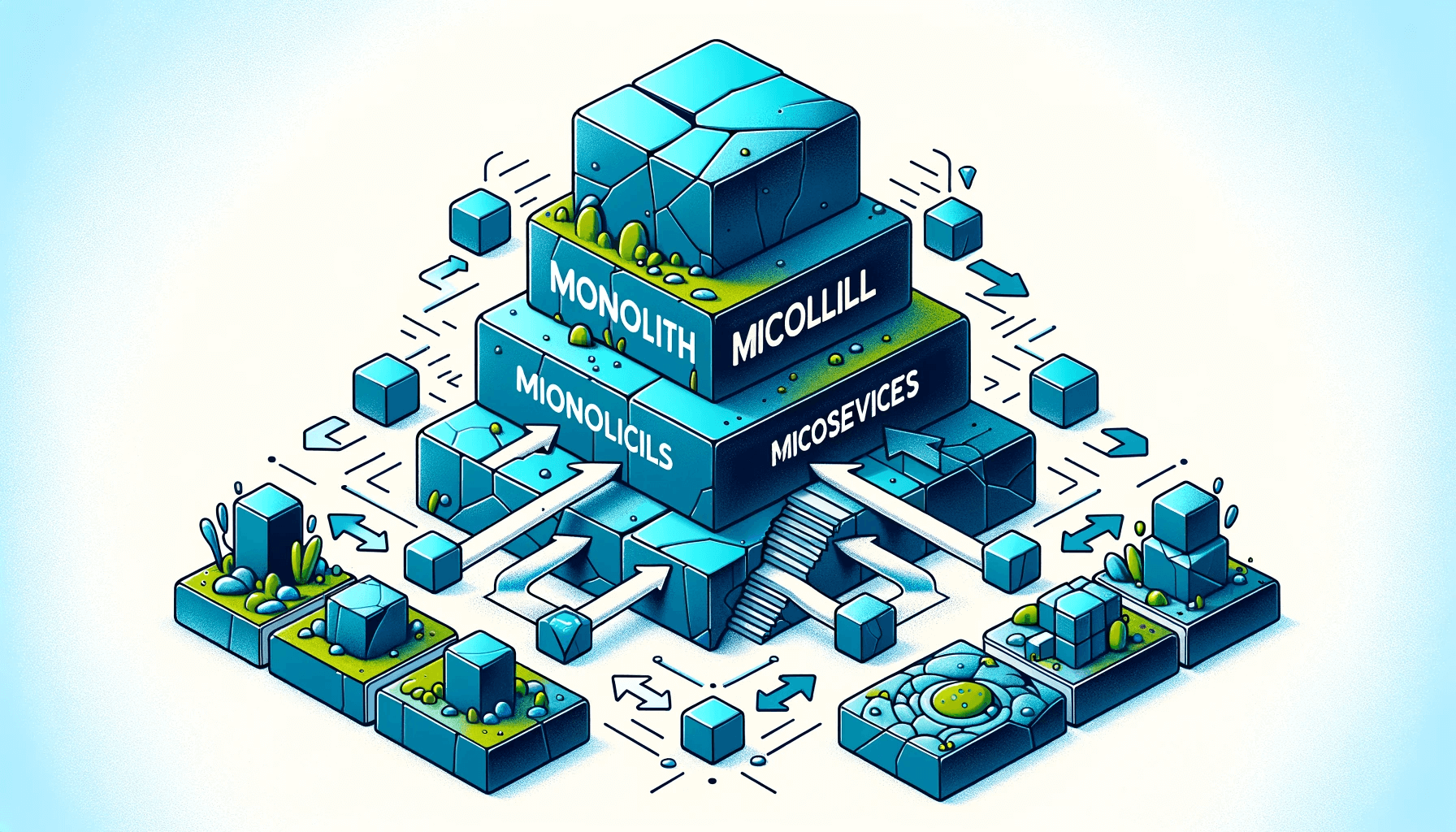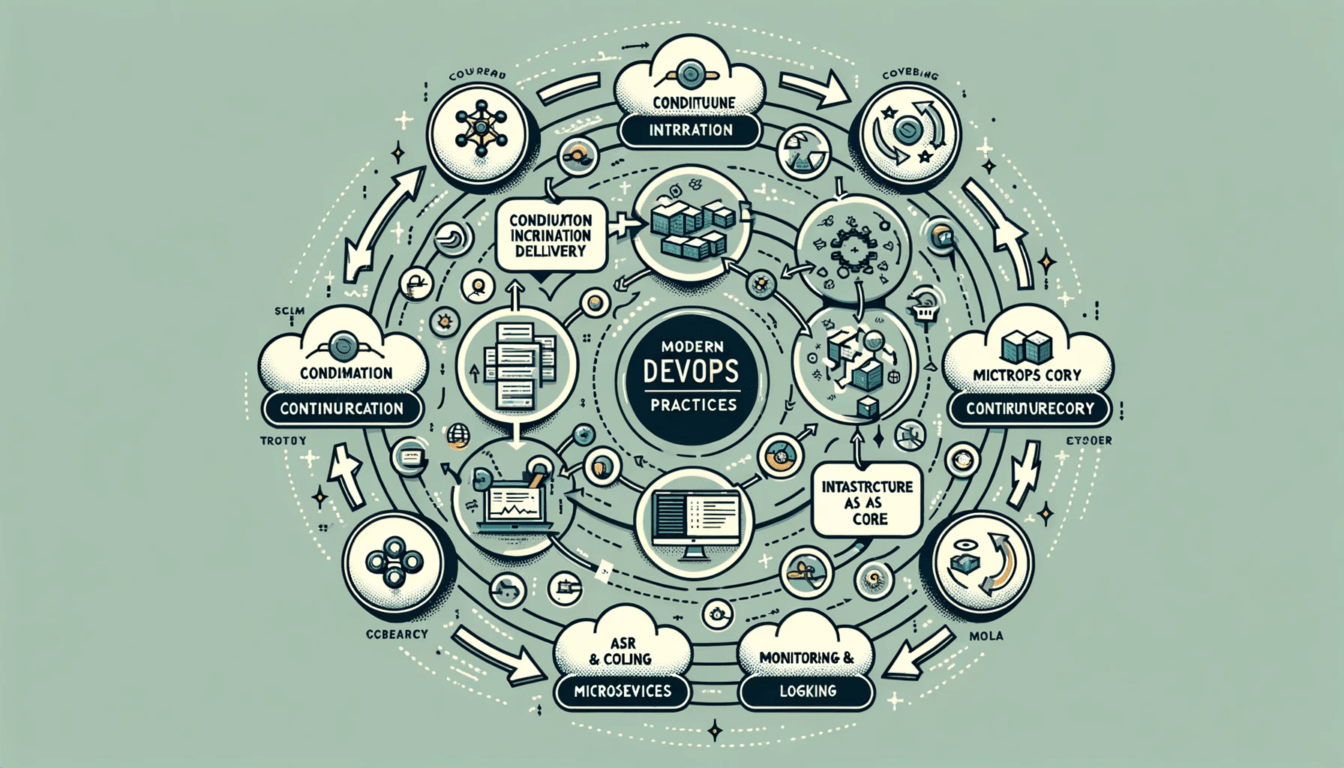Introduction
The emergence of DevOps has revolutionized software development and deployment by integrating development and operations teams and processes. This new culture of collaboration, automation, and monitoring has enabled organizations to achieve rapid innovation and delivery.
In this comprehensive guide, we’ll explore the key components and best practices that comprise a modern DevOps approach. We’ll cover everything from adopting agile project management to implementing continuous integration and delivery (CI/CD), along with critical aspects like monitoring and a culture of collaboration.
Whether you’re new to DevOps or looking to optimize your processes, this guide will provide deep insights into building a high-performing DevOps practice. Let’s dive in!
The Rise of Containers for Portable Software
Before diving into DevOps practices, it’s important to understand some of the key enabling technologies like containers.
The Need for Containers
Traditional software development and deployment models make portability and dependency management challenging. Virtual machines provided some improvements for isolating resources, but they carry overhead from duplicating the operating system.
Containers revolutionized software delivery by providing standardized application isolation with near native performance. Some key benefits include:
- Faster startup times – Containers don’t boot an OS, just the app
- Portability – Bundle dependencies so software runs on any infrastructure
- Efficiency – More apps per host since VMs aren’t duplicated
- Microservices – Decompose monoliths into containerized services
- Immutable infrastructure – Destroy and replace containers easily
Container Architecture
Containers rely on namespaces and control groups (cgroups) to provide resource isolation and allocation for processes. This creates an isolated environment for each container:
- PID namespace – Isolates process IDs
- NET namespace – Creates unique network interfaces
- IPC namespace – Manages interprocess communication
- MNT namespace – Creates own filesystem mount points
- UTS namespace – Isolates kernel hostname and domain
- Cgroups – Limits and allocates CPU, memory, disk I/O
Using these features, containers provide a portable packaging mechanism for applications.
Container Networking
There are several approaches to handle container networking requirements:
- Bridge networking – Containers connect via virtual bridge to Docker host’s network
- Host networking – Containers share host’s networking directly
- Overlay networking – Containers on different hosts connect via a virtual network
Overall, containers enable build once, run anywhere while avoiding infrastructure dependencies, allowing for greater portability across environments.
Adopting Modern DevOps Practices
Now that we’ve seen how containers provide a fundamental building block, let’s explore some of the key practices that enable a modern DevOps approach.
Continuous Integration and Continuous Delivery

CI/CD automates the software release process all the way through to production:
- Continuous integration – Developers commit code which triggers automated build and test
- Continuous delivery – Releases are automated through deployment pipelines
- Popular tools like Jenkins, CircleCI, and TravisCI streamline CI/CD workflows
Infrastructure as Code
Infrastructure as code (IaC) treats provisioning IT resources as code:
- Terraform and Ansible allow declarative infrastructure provisioning
- Template repositories replace manual changes
- Achieve consistency, save time, reduce risk
Monitoring and Logging
Monitoring gives observability into system and business metrics:
- Timeseries databases like Prometheus store metric data
- Visualize performance with Grafana dashboards
- Collect logs with Elasticsearch, Logstash and Kibana (ELK)
This enables tracking key metrics like website uptime, traffic, sales etc.
Communication and Collaboration
Modern DevOps breaks down silos between teams through practices like:
- Daily standups via chat tools like Slack
- Blameless postmortems focus on process improvement
- Creating a culture of shared responsibility through transparency
Critical DevOps Practices and Methodologies
Beyond the foundational elements above, there are additional integral practices that create mature DevOps workflows.
Continuous Testing and Feedback
- Shift-left testing starts earlier in development lifecycle
- Test automation across units, integration, and UI provides rapid feedback
- Fix issues before they reach customers
Small, Frequent Releases
- Reduce risk with incremental changes vs big bang releases
- Uncover defects faster through frequent patches
- Achieve continuous delivery of value
Security and Compliance
- DevSecOps to build in security from the start
- Automated policy enforcement, compliance checks
- Treat infrastructure as code and scanning repositories
Cloud and Microservices
- Cloud infrastructure enables elasticity and scale
- Microservices architecture breaks apart monoliths
- Deploy and scale independently
Culture of Collaboration
- Foster empathy and transparency between teams
- Ensure shared ownership and accountability
- Conduct blameless retrospectives

The Benefits of Modern DevOps
Implementing these practices and tools provides measurable business and productivity improvements:
- Faster time to market – Increase release frequency from weeks to days
- Improved quality – Automatically catch defects and regressions
- Higher efficiency – Reduce manual processes and provisioning time
- Better resilience – Limit blast radius of changes, roll back faster
- Enhanced visibility – Gain data and insight into systems
- Greater scale – Flexibly manage capacity and demand
In summary, a modern DevOps approach accelerates delivery while improving stability, security, and collaboration.
Key Takeaways
- Containers provide consistent and efficient application delivery
- CI/CD automates testing and release processes
- Infrastructure as code manages resources declaratively
- Monitoring and logging enable observability
- Communication fosters a collaborative culture
- Testing, small releases and security aid quality
- The cloud and microservices facilitate scale
- Modern DevOps improves speed, quality and productivity
By leveraging these practices holistically, organizations can achieve rapid innovation, resilience, and market leadership. DevOps continues to evolve, but adopting these tenets provides a strong foundation.
The Evolution of DevOps Methodologies
The ideas behind DevOps have been evolving over the past decade, building on concepts from earlier software development frameworks. Understanding this progression helps situate modern DevOps in the context of the methodologies that laid its foundations.
Waterfall Development
The traditional waterfall development methodology was highly linear and siloed. Requirements were fully specified upfront, then handed off to engineering to build and test. This sequential process slowed releases and inhibited flexibility.
Transition to Agile and Scrum
Agile software development brought more iterative and incremental delivery models like Scrum:
- Scrum utilizes short sprints to deliver working software
- Prioritizes responding to change and customer needs
- Focuses on small cross-functional teams
This accelerated development but still left gaps between dev and ops.
The Rise of DevOps
DevOps emerged from the need to integrate development and IT operations, which Agile did not address on its own. Key DevOps practices include:
- Adopting Agile project management philosophies
- Implementing continuous integration and delivery
- Increased automation of the software lifecycle
- Focus on monitoring and observability
- Creating a culture of collaboration between teams
This end-to-end approach from code to production delivered huge gains in speed, reliability and efficiency.

Our Top 8 Best Practices for Implementing DevOps
Based on the evolution and industry experience with DevOps, these leading practices have proven most critical for implementation success:
1. Agile Project Management
Take an iterative approach through practices like Scrum and lean processes to build in feedback and accountability.
2. Shift Left with CI/CD
Shift testing left in the software lifecycle by building a CI/CD pipeline to automate builds, testing, and releases.
3. Build with the Right Tools
Choose an integrated toolchain for version control, code scanning, monitoring, and collaboration.
4. Implement Automation
Automate manual processes like infrastructure provisioning, policy enforcement, testing, and deployment.
5. Monitor the Pipeline and Applications
Instrument applications and build visibility into the DevOps pipeline using APM and logging.
6. Observability
Build observability into systems using metrics, logs, and traces to gain real-time insight.
7. Gather Continuous Feedback
Enable rapid product iterations by utilizing practices like shift-left testing and user data.
Start earning effortlessly! Claim your $3 bonus and monetize your unused data with Honeygain. It’s simple, secure, and smart.
Claim Nowand watch your balance grow! 🍯💸
8. Change the Culture
Transform processes, org structures, and leadership models to foster collaboration and transparency.
Taking a comprehensive approach across tools, processes, visibility, and culture is key for DevOps success.
Implementing Cultural Changes
While the technical practices are foundational, cultural transformation is also essential for realizing the full benefits of DevOps:
Break Down Silos
Move from siloed “dev” and “ops” teams towards shared ownership and responsibility across the delivery lifecycle.
Encourage Collaboration
Replace hand-offs with active collaboration through chat tools and an empathetic mindset across teams.
Increase Transparency
Share information openly about objectives, status, and issues to enable swifter troubleshooting and data-driven decisions.
Adopt Lean Principles
Take cues from lean manufacturing by eliminating waste, amplifying learning, and building in quality.
Flatten Hierarchies
Reduce bottlenecks by providing teams more autonomy and decentralizing decision making.
Champion Experimentation
Promote a blameless culture focused on iterations and feedback rather than fear of failure.
With leadership commitment, these steps can transform culture to fully realize DevOps benefits.
Key Takeaways
- Modern DevOps builds on Agile, lean, and CI/CD methodologies
- Critical technical practices include automation, monitoring, and testing
- Changing culture, team structures, and leadership models is also key
- Top cultural changes include increased collaboration, transparency, and experimentation
- Taking an end-to-end approach across people, process, and technology yields optimal results
By studying DevOps evolution and applying technical and cultural best practices, organizations can transform their capability for delivering innovation at scale. While a journey, the gains in productivity, stability, and customer satisfaction make DevOps one of the most impactful developments in modern software delivery.

Containerization for Efficient and Portable Applications
While modern DevOps practices can be applied to software built and deployed in a variety of ways, containers provide some unique advantages that align with core DevOps principles.
Containers Enable DevOps Velocity and Freedom
Several attributes make containers a catalyst for DevOps transformation:
- Immutable infrastructure – Containers are ephemeral and easily replaced
- Abstraction and portability – Runs on any infrastructure with consistency
- Speed and efficiency – Streamlined images enable faster deployment
- Cloud native – Containers power the scale of cloud platforms
- Microservices– Deconstruct monoliths into containerized services
- Standardization – Consistent environments across environments
By decoupling applications from infrastructure, containers give teams more agility to build, deploy, and scale applications seamlessly across environments.
Migrating from Virtual Machines to Containers
Many organizations begin implementing containers by replatforming certain virtual machine workloads:
- Start with non-critical stateless services and apps designed for horizontal scaling
- Evaluate persisting state outside containers with technologies like volumes
- Assess networking model – bridged, host, overlay networking etc.
- Consider management needs – health monitoring, logging, service discovery
- Determine orchestration requirements – Kubernetes, Docker Swarm, etc.
With some upfront planning, organizations can pragmatically migrate VM workloads to containers and quickly see benefits.
Orchestrating Containers at Scale
While containers provide efficient packaging of apps, orchestrators like Kubernetes (K8s) are critical for managing containers across clusters at scale. Capabilities include:
- Deployment and scaling of containers across hosts
- Service discovery and load balancing
- Health monitoring and self-healing
- Automating rollouts and rollbacks
- Infrastructure abstraction and portability
Paired with containers, orchestrators enable automation and resilience at massive scale.
Are We There Yet? The Road Ahead
While containers have fueled a DevOps revolution, there are still areas for continued growth:
- Improved security– Limiting broad host access, hardening images, better scanning
- Streamlined data storage– Stateful containers and persistent volumes
- Simplified networking – Seamless connectivity across environments
- Deeper visibility – Into health, performance, metrics
- Multi-service meshes – Connecting services and tracing data across clusters
- Seamless portability – Reducing friction across diverse infra and envs
As solutions evolve, container platforms will continue enabling DevOps teams to ship software reliably and efficiently at unparalleled velocity.
Key Takeaways
- Containers provide immutable infrastructure and portability
- Migrating legacy apps requires planning around state, networking, etc.
- Orchestrators like Kubernetes manage containers at scale
- Areas for growth include security, data, networking, visibility
- Despite room for improvement, containers offer critical DevOps benefits
By leaning into strengths like abstraction from infrastructure, containers will continue fueling the promise of DevOps – delivering business value quickly, reliably, and securely.
Putting It All Together: A DevOps Transformation Guide
We’ve covered a lot of ground discussing modern DevOps practices, cultural change, and leveraging containers. Here is a summary of key steps to lead a DevOps transformation:
Build a Foundation of Automation
- Implement continuous integration with automated build and testing
- Create continuous delivery pipelines to release changes quickly
- Introduce infrastructure as code practices
Automating manual tasks improves velocity and reliability.
Instrument Monitoring and Observability
- Monitor applications and systems using APM and logging
- Build dashboards with critical business and system metrics
- Contextualize data using tracing and logs for troubleshooting
Observability enables data-driven decisions and responses.
Rightsize and Modularize Applications
- Break monoliths into loosely coupled microservices
- Containerize applications for portability across environments
- Manage and scale with a container orchestrator
This accelerates deployment while improving resilience.
Foster an Empowered Team Culture
- Break down silos and reorient teams around services
- Flatten hierarchies and distribute decision authority
- Support experimentation through a blameless culture
Collaborative culture is key for transformations.
Evangelize and Lead Change
- Communicate a compelling vision for change and results
- Lead by example – Have management adopt practices first
- Celebrate wins and quick successes to build momentum
Stakeholder buy-in across all levels is critical for success.
Take an Iterative Approach
- Prioritize work into achievable increments
- Review progress frequently and solicit feedback
- Maintain focus on delivering customer value
Sustained transformation requires an Agile mindset.
By taking deliberate steps to transform team culture, tooling, and architecture, organizations can unlock the many benefits promised by DevOps. It requires leadership commitment, grassroots enthusiasm, and a customer-centric vision. While a journey, the gains in productivity, stability, and innovation are well worth the effort.
Conclusion
This guide covered the key technical and cultural pillars of a modern DevOps practice:
- CI/CD automation accelerates delivery while improving quality
- Infrastructure as code, monitoring, and containers enhance stability and velocity
- Testing, microservices, and small releases aid iteration
- Collaboration, empowered teams, and blameless culture enable innovation
- Focusing on automation, observability, culture and customer alignment drives transformation
By bringing development and operations together with aligned processes and automated workflows, DevOps has demonstrated immense power. It has moved from an emerging methodology to a cornerstone of digital transformation across industries. With a thoughtful adoption approach, the benefits of faster time-to-market, improved resilience, and happier customers are attainable by any organization.
While the DevOps journey continues, taking steps to modernize practices, tools, and culture will set your organization on the path for innovation and market leadership. The future has never looked brighter for delivering software from idea to customer with velocity, quality and delight.

